Robert DeRosa
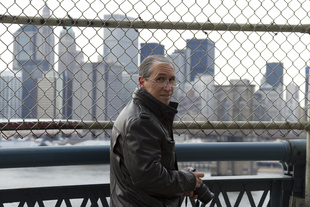
You mentioned that you’re a career changer. How did that happen?
I had photographed since I was ten years old and had a steady interest in it over the years, taking continuing education courses when time and money permitted to further develop my skills. I had always hoped that one day I might be able to pursue photography as a career. A combination of factors (most of which I would not have chosen) made that possible.
The financial crisis hit the firm I worked for particularly hard, and large numbers of people lost their jobs. I was one of them. The obvious path would have been to look for another job in financial services, but many other companies were in a similar situation and my age would have added to the difficulty of a search for a new job.
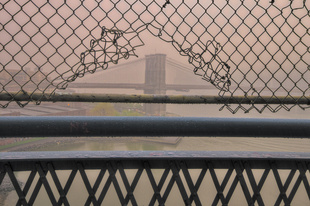
During my career I had reinvented myself several times, so rather than dwell on the problems, I decided that this would be a good time for one more reinvention.
Knowing my love of photography, my wife and daughter encouraged me to pursue my passion and my dream. I decided to go back to school and earn a master’s degree in digital photography at the School of Visual Arts. Because I had thirty-two years of service at my last job, my severance package was sufficient to put me through school.
During the same period, my father passed away and there were two family members he cared for who no longer had caregivers. We moved to his home to assist them. An unintended byproduct of that was that it brought me physically closer to school and reduced my commute and other expenses.
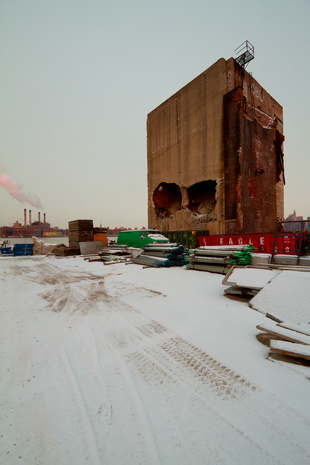
Finally, the chair of the department I applied to in grad school decided to take a chance on me based on my life experience and my portfolio even though I didn’t have an undergraduate degree in photography. I’m deeply grateful for her faith in me.
So the stage was set for me to go back to school, earn a graduate degree, and build the skills and the contacts necessary to launch a career in photography.
What was going back to school like?
Quite the adventure! I was older than most of the students by at least a factor of two and older than just about all of the instructors.
I hadn’t been in a formal academic setting in almost thirty-five years. But I had done a brief stint in graduate business school and continuing education in photography as well as ongoing professional training, so I wasn’t entirely out of practice.
My thirty years of working with youth and young adults in the Church helped a lot, too—it helped keep me current with my computer and social networking skills, and it taught me to how to establish fun, productive relationships with folks many years my junior.
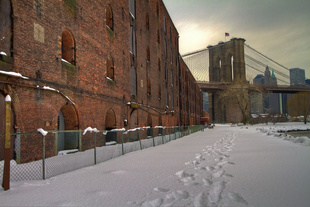
I did have a lot of catching up to do with classmates whose photography skills were more developed than mine, so I had to put in some very long hours to read and apply the skills we were being taught. It was not uncommon for me to spend sixty to seventy hours a week or more to complete my class work and assignments. My parents and the Church taught me to work hard and I have always been a high-energy person, so the grind was tiring but not overwhelming.
How did your photography help you cope with the loss of your job?
Instead of dwelling on the negatives of losing a job and all the challenges of finding a new one in a down market at the age of sixty, photography helped to inspire me, energize me, and focus my attention on work that I loved and had long dreamed of doing. Attitude is critical at a time like this.
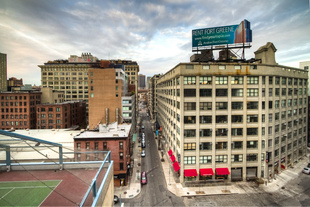
How has your pursuit of art changed your life?
My workday is more solitary and more under my control—two things I enjoy in my work. Since I shoot fine art urban and industrial landscapes, most of my work is done in the early morning hours before and after sunrise so I can capture the essence of a place without the distraction of the traffic and people that will fill the area during working hours. The streets of the city are quiet and mostly empty. It is contemplative work that is renewing and energizing.
Whether I am shooting beauty that is often passed by or decay and the seamier side of the city, the work is an act of creation in a small but significant way. And when I do my job well, people want to talk about it and debate what they saw in it and what it means to them.
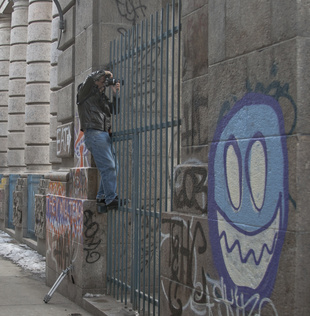
How did your background in finances and political science influence your art?
My experience in financial services has mostly helped with the business of the art—the marketing and promotion of my work and the development of a business plan. I think that if I succeed in this business, it will have as much to do with my business skills as it will my talent for creating interesting and beautiful art.
My political science background has informed some of my recent work as I explore the love/hate relationship that we have with industry and consumption.
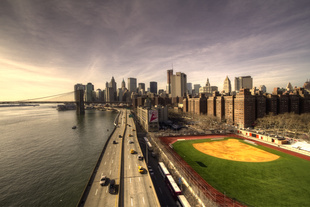
What was the most challenging aspect about completely changing your career?
Being self-employed was perhaps the biggest change. All my life I have worked for either large corporations or government. I learned how to lead and succeed in large organizations, both public and private. Now I do not have the infrastructure around me. If something needs to be done, I am the one who has to find a way to do it or get it done. It is both empowering and a little overwhelming.
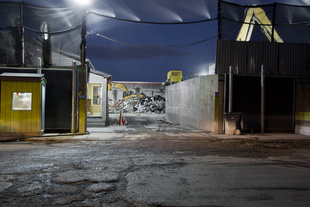
Tell us how you came to join the Church.
Looking back from the vantage point of thirty years later, it is easy to see the Lord’s hand in my coming to the Church. I can trace some of the beginnings of it to many years before I actually came into contact with the Church.
A close friend who I first knew in college joined the Church several years after graduation. He was the first to talk to me about the gospel. I was slow to respond for a variety of reasons, mostly having to do with pride. This friend also got to know one of my roommates, who was more receptive to the gospel and was baptized rather quickly. Both of them patiently and persistently kept talking to me about the Church and invited me to participate in Church activities.
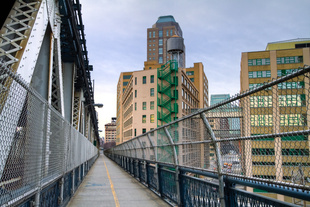
Eventually, two missionaries were transferred into the area where I lived and I struck up an instant relationship with them. We are still in touch today. They taught and boldly challenged me to be baptized much earlier than I thought they would. I was faced with a decision. I chose to fast and pray and I received my answer. Long story short, be patient, be persistent, and don’t give up on your friends.
How has the gospel influenced your work?
It has helped me to trust that I can turn to the Lord for help in making decisions and seeking inspiration regarding my career, my projects, and even the individual images I create. I feel very strongly that he is a loving and supportive partner in my artistic creation. I believe he has placed among my circle of acquaintances teachers, mentors, friends, and most importantly family who have influenced me in positive ways and encouraged me in my work.
Specifically, the Lord is helping to shape my vision of a new project I’m currently researching related to some of the Savior’s teachings and the visual imagery he used.
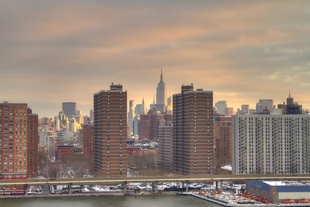
Is there a particular piece you consider your best? Why?
That’s a little like asking which of my children I love the most. I love them all for different reasons. People have responded very positively to the images “Two Bridges” and “Field of Dreams—NYC.” The first because of the many different aspects of the image that attract your attention: the tessellation, or repeated forms, in both the lower and upper fences, the horizontal rails that lead the eye up to the Brooklyn Bridge, and the triangular hole in the fence that mirrors the pyramid formed by the tower and cables of the bridge.
I particularly enjoy the lesson this image taught me: to continue to observe. I came across this hole in the fence that someone had cut to shoot pictures of the iconic skyline of Lower Manhattan. I took several pictures through it. Then, as I was packing up my gear, I turned and saw that the hole was more interesting than the pictures I was making. Keep observing, keep looking even as you are leaving a location.
The second seems to touch people with the contrasts of this colorful and quiet baseball field surrounded by the densely packed buildings and flanked by the FRD Drive leading our eye to the congested skyline of Lower Manhattan.
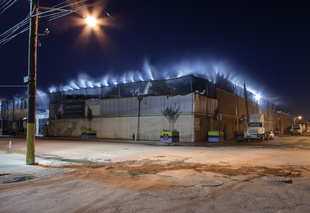
What made you decide to do urban photography?
I have always been a landscape photographer. I knew that from my earliest years. I would come back and show my pictures to my parents and my mother would say, “That’s nice, dear. But where are the people?” I live in New York City and so my landscape is made of concrete rivers, glass and steel mountains, mechanized wildlife, and tumbleweeds of litter. My landscape is the urban landscape. That’s where I live and that is what I shoot.
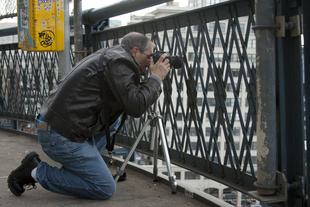
What inspires you in your work?
Seeing and observing. I mentioned earlier that I seek inspiration for my projects through study, research, and talking with the Lord. Then I get out and visit locations over and over again. The first visit gives me an idea of the main subjects I’ll start the project with and what equipment I’ll need. The easy images come from these visits. They are rarely the ones that make the final cut. Then the work comes in. I start shooting and more carefully observing the scenes—wide angles, close-ups, details, panoramas, bracketed exposure of the same scene that will later be combined to get a more faithful representation of what my eye saw than a single exposure can communicate. I climb on top of things, crawl under things, hang from fences and lampposts and enter any industrial location that people will not chase me out of. I follow where the work leads me and persist until the body of work feels right—feels complete.
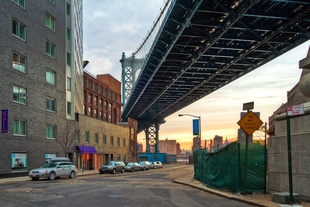
What are your favorite subjects to photograph?
The infrastructure that supports the city: the industry, its architecture that lifts our vision, the bridges that connect us, the transportation that delivers the goods, the refuse and byproducts—all the stuff that is the lifeblood of a large metropolitan area that we pass by and ignore as we go about our busy lives, oblivious to what supports densely populated cities. It has its own beauty. In the early morning light of sunrise when the streets are empty and we can see more clearly, it is alternately beautiful and a little creepy.
Are there any particular parts of New York that you just love to go to?
I keep coming back to Brooklyn, where I was born and spent the first twelve years of my life. It is so diverse, vibrant, and complex that I never seem to run out of material to photograph.
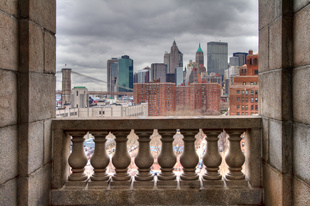
What are some challenges that come with doing urban photography?
The things that I love to photograph are usually obscured by traffic, people, and the day-to-day chaos of the workday. So if I want unobstructed views, I need to do it in the hours just before and after sunrise. Saturday mornings are best. I do not shoot on the Sabbath. The Lord knew what He was doing in creating a day of rest. It refreshes and recharges me. I concentrate on other spiritual things and service that fill my reservoirs of creativity. So Saturdays are prime time. Of course, Saturdays are also prime time for household and family chores, so I need to push through the fatigue of having risen at 4:30 and photographing for two to three hours and make sure that there is enough time for the family.
What are you working on now?
I am working on two things. One project is called “Industrial Strength” and deals with the love/hate relationship that we have with industry and consumption. I shoot these images in the sixteen Industrialized Business Zones of the city. The other project is still in the research stage and deals with the visual imagery used by the Savior in his teachings.
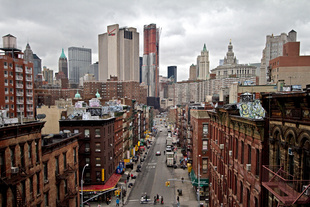
What kind of camera do you use?
A Canon 7D. It’s light, quick, and shoots stills and HD video, so it gives me the flexibility to do many different things.
What’s the most rewarding part about your work?
The reaction of visitors at an exhibition or the discussions my images generate when I post them to my blog or Facebook or Flickr. I am fascinated to hear what others see in my images and how they cause people to think about or see things in a new way.
How do you see your art building the kingdom?
I hope my art connects people and teaches gospel principles without being “preachy.” For example, my thesis project, “A Walk Across Time,” dealt with the enduring beauty, resilience, and evolution of buildings that had survived and thrived for more than 100 years in a cityscape that seems to change every day. Calling people’s attention to these structures spurred some thought and hopefully became a metaphor for how we can be resilient, endure through trials, remain confident and beautiful even when the world sees us as old-fashioned or out-of-date, and evolve throughout our lives. The project had many lives as large prints and even fine art postcards that were sent to people around the world to share their thoughts and messages. One project with a simple theme connected people around the country and on four continents to share thoughts that were exhibited for many others to see. So teaching gospel principles and connecting people is what I hope my work ultimately does. ❧
